|
The Salar de Uyuni.
|
20 August 2003
The Salar de Uyuni is the worlds largest and highest salt plain, spanning 12,000 sq-miles, 3650 metres high and 10 metres thick, this landscape was truly bright and spectacular.
|
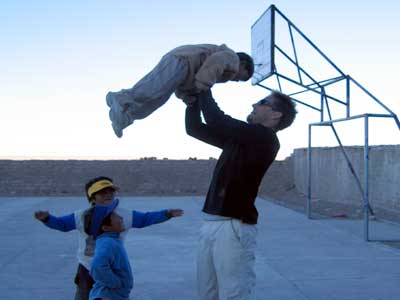 |
We stayed the night just on the edge of the salt pan, with huge hillsides dating back to the Inca Empire.
Jason played football with the local boys who loved him spinning them in the air. He had to be careful to miss their dribbling and runny noses.
After 10 minutes of Supermaning kids he was totally shattered but not of the snotty terrors would take no for an answer:
'Uno mas, Uno mas' (one more, one more)
|
|
This is the four wheel jeep that we spent lots of time driving around in. Our Bolivian driver who was a real sweety but liked to take things slowly, had spent the night in this cold jeep. He hadn't had much sleep and we had to keep buying him caffeine to ensure his eyelids didn't close.
He kept us entertained with his Bolivian music which seemed to be in all the jeeps, and seemed to have the same tunes repeated on each side every 20 minutes.
|
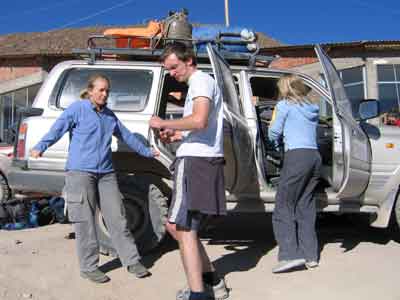 |
|
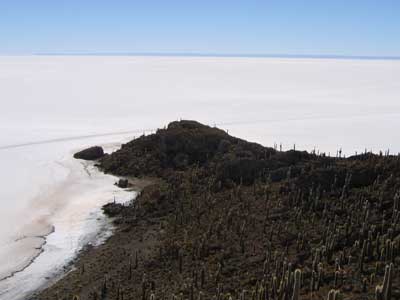 |
We drove for an hour along a plain that contains 10 billion tonnes of salt. This rocky outcrop is called Isla de Pescado. (Its supposed to look like a fish). Covered in hundreds of phallic looking Cacti, you get a bindingly bright view of a salt covered landscape.
As we got out of the jeep we felt we should be donning ice skates rather than sunlotion.
|
|
The dried up lake produces tessellated geometrical crystals. This pattern surrounds the rocky island.
|
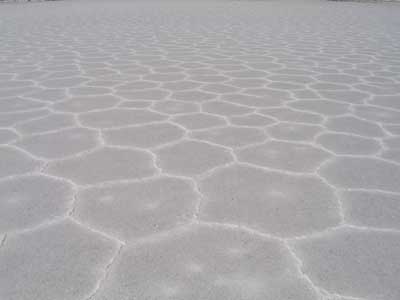 |
|
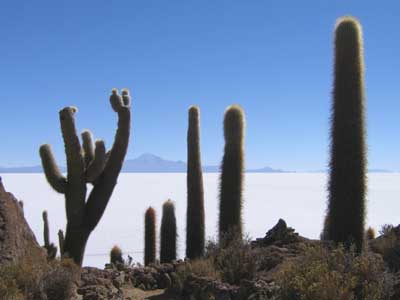 |
This is the view from the top of the island. The cacti reached as far as 12 metres and some were over 1200 years old.
|
|
Where there is salt, they have to make a cheesy salt hotel, complete with Salt furniture.
We were expecting the salt to be soft like table salt not set like concrete slabs like it was.
|
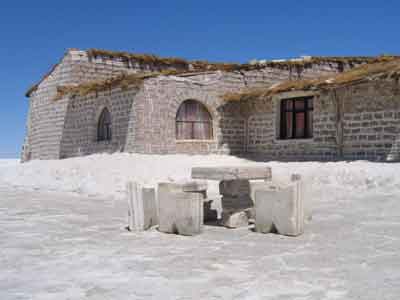 |
|
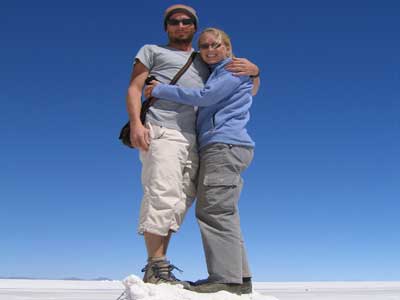 |
We are standing in the middle of the salt plain on a pile of salt that had been harvested by the locals.
|
|
This is a local working by hand to collect the salt for harvest. They get paid by the amount they collect during the day.
We stopped nearby for lunch, where the locals who work there live. It was difficult to imagine that most of the locals would probably only ever see these barren, inhospitable, salt landscapes.
|
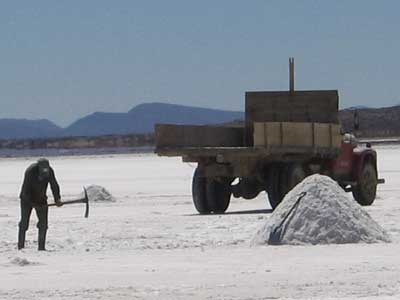 |
|








